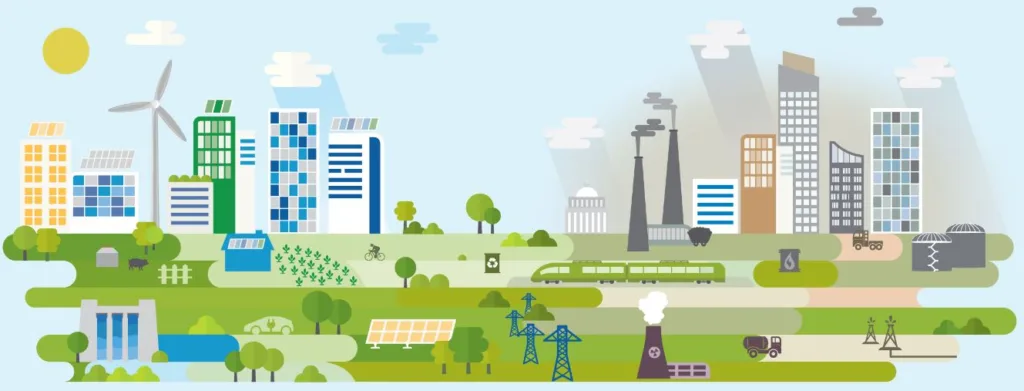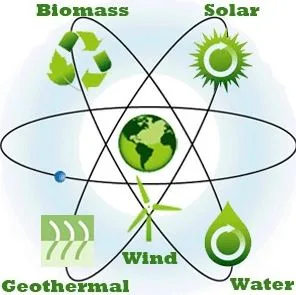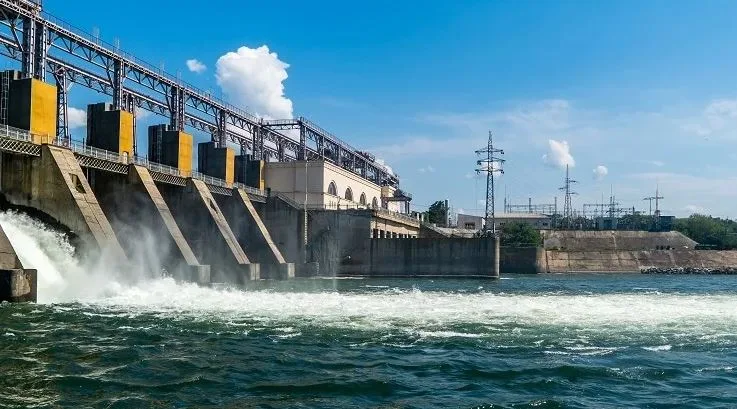What Is Clean Energy, How Does It Work?

In this article, we will discuss What Is Clean Energy, How Does It Work? The term “clean energy” refers to energy generated using processes that do not discharge greenhouse gases or any other pollutants. Renewable energy sources like sunlight and air currents can be used to produce clean energy.
It’s crucial to understand that the words clean energy and renewable energy are not equivalent. Renewable energy sources are not all clean energy sources. For instance, geothermal energy is a renewable source of energy, but some of the ways it might be used may be harmful to the environment. Learn about clean energy today and how it functions. Is renewable energy entirely clean?
Table of Contents
What Is Clean Energy?
Clean energy is defined as energy that is produced from sustainable, emission-free sources and energy that is conserved through energy-saving practises.
There are some similarities between clean energy and green or renewable energy sources, but they are not identical. It is important to comprehend what it really means in order to realise the difference.
What Does Clean Energy Mean?

Green energy is energy generated from natural sources, whereas clean energy is energy obtained from sources that do not release air pollutants. There is a tiny difference between these two energy types, despite the fact that they are commonly referred to as being the same.
Renewable energy is power generated from resources that are continually replenished. Unlike fossil fuels and gas, these renewable energy sources, which include wind and solar energy, won’t run out.
Despite the fact that most green energy sources are renewable, not all green energy comes from renewable sources. For instance, although though hydropower is a renewable resource, some contend that it is not environmentally benign because of the industrialisation and deforestation brought on by the building of hydro dams.
Green energy joins renewable energy sources like solar and wind to create the ideal clean energy blend.
The following are some quick ways to recall how these various energy kinds differ from one another:
- Clean energy produces clean air.
- Natural resources equate to green energy
- Recycling equals renewable energy
How Does Clean Energy Work?
By generating energy without causing harm to the environment, such as the release of greenhouse gases like carbon dioxide, clean energy works. A large portion of clean energy is also renewable, such as wind energy, some hydropower, and solar energy production.
Why Is It Important?
The most important aspect of clean energy as a component of a future global energy system is its benefits to the environment. Clean, renewable resources not only protect the planet’s natural resources but also lessen the likelihood of environmental catastrophes like fuel spills or the issues brought on by natural gas leaks.
It is feasible to generate dependable power supplies to improve energy security, ensuring there is enough to meet our demands, through different power plants using different energy sources and fuel diversification.
How Do Renewables And Energy Efficiency Work Together?
Natural processes that are short-lived, regenerative, and cannot be exhausted are the source of renewable energy. Biomass, geothermal, hydropower, solar, and wind energy sources are the most widely used renewable energy sources.
Technologies, goods, and services that lower the amount of energy needed for structures, operations, or tasks include passive solar technology. Discover more.
Simply put, the most sustainable energy planning scenario is a clean energy economy supported by both renewables and energy efficiency.
Are All Renewable Energy Clean?
The use of renewable energy has reduced our reliance on coal and other fossil fuels while also generating new industries and jobs. It is an efficient and cost-effective alternative. As long as they are planned and situated in the proper locations, energy sources based on the sun, wind, and ocean can be considered clean and renewable.
1. Geothermal Energy

How does geothermal energy compare? This pure, sustainable energy is derived from the heat of the earth. However, studies have shown that careful planning is necessary to ensure that it is sustainable.
Groundwater contamination is a possibility, and over time, there is a propensity for land to subduct, trigger seismic activity, and experience landslides. Geothermal energy exploration also has an impact on the environment because it frequently takes place in historically significant and environmentally delicate regions. A well-thought-out plan is therefore required for this.
2. Hydro Energy

Think about hydroelectric power. Although it is a renewable energy source, it does not meet the criteria for clean energy. Dam construction is harmful to the environment because it displaces habitat, fish and animal species, and people. It also causes abnormal flooding and diverts water from communities who depend on it.
A drought could exist, and many rivers are drying up for various reasons. What was originally thought to be renewable may therefore be limited. In the initial years following dam closure and reservoir development, there is a large increase in greenhouse gas emissions. Instead, you might want to think about exploiting river currents for small-scale hydropower plants.
3. Biomass
Biomass-based energy is another renewable energy source that can be regarded as quite clean. Organic materials like wood, bark, and trash from agriculture and industry are included in biomass. Direct combustion is possible in specifically constructed power plants. Because it has less sulphur than coal, which burns with less sulphur dioxide, it burns cleaner.
Additionally, it can be engineered to decompose using bacteria to yield methane, which is then used as fuel. Despite being referred to as a low-carbon option, it still releases some carbon dioxide during combustion. It indirectly destroys significant ecosystems that store a lot of carbon, such forests and grasslands. As a result, it cannot be considered entirely clean.
4. Nuclear Power
Although it is a non-renewable energy source, nuclear power is regarded as a “clean energy” source because it does not emit any damaging carbon emissions. Its administration and installation procedures are more expensive than others.
Another crucial aspect to take into account when using and discarding radioactive materials is safety. During the Chernobyl tragedy in 1986 (an industrial accident) and the Fukushima Daichi nuclear disaster in 2017, radioactive toxicity and radioactive contamination posed very significant risks (natural disaster due to tsunami). Although it may seem safe, it should be categorised as risky.
Recent Developments In Renewable Energy
The advancement of renewable energy is starting to rival the initial invention of novel and revolutionary concepts by research and development teams in terms of excitement.
There is no limit to what humanity may dream of and adapt to, from turning concrete highways and parking lots into solar roadways to solar automobiles and nearby communities mining asteroids into space.
Biofuel Production Using Algae
Corn-based ethanol has been blended with gasoline in the past. But there are drawbacks to ethanol degradation. Butanol is being produced from algae in new research. This alga feeds on carbon dioxide, nitrogen, and phosphorus fumes.
Each 5-8 day they picked and dried. Extracted from carbohydrates, natural sugars are converted into butyric, lactic, and acetic acids by fermentation. Butanol is a less expensive alternative to ethanol that is created by further fermenting butyric acid.
When algae is grown in aquatic areas that have dead zones, this has certain benefits. Runoff from fertiliser containing nitrogen and phosphate pollutes dead zones, where life cannot exist. Algae thrive here, which can lead to a river or lake being clean and making the procedure environmentally beneficial.
Battery Capabilities Progress
Increased battery capacity will enhance the ability to store the extra power generated. Large utility-scale energy storage systems, innovative materials that go beyond microgrids, faster and more effective superconductors, and modern lithium-ion batteries are examples of these advancements. New battery chemistries and designs are emerging.
Smart Grid Technology
Modernizing the grid makes it smarter and more adaptable as smart grid technology is pushed to perform more generation and transmission, as it was originally designed to accomplish. This will lessen the severity and length of power outages, lessen the impact of hurricanes, and speed up service restoration.
Greater safety, a lower peak load, better integration of renovation, and cheaper operating costs will all result. Sophisticated sensors, digital metre advanced relays, automatic feeder switches, and batteries are examples of how technology advances.
Marine Technology
Utilizing wave and tidal energy from the oceans is advised by marine technology because it is the third participant in the energy market after wind and solar energy. Large amounts of energy are produced by rivers and oceans as they fill up with water, and this energy can be used.
The unpredictable nature of the wave intensity and its sporadic nature present several challenges. Tidal power plants can be installed in dangerous and challenging regions. The effects of technology on marine habitats are also being researched.
Perovskite
In order to improve cell efficiency, a substance called percocyte is being tested in solar cells. It can now turn 23% of solar energy into electricity. To make these cells durable for long-term use, work is being done (at least 20 years which is the average lifetime of a solar panel).
The Water Split Into Oxygen And Hydrogen
Use of additional power to split water into oxygen and hydrogen is one of the most promising concepts for storing renewable energy. Hydrogen is used in a variety of industrial processes and can power hydrogen fuel cell vehicles.
It was expensive and required a lot of energy to split water using a precious metal catalyst like platinum or ruthenium. The high-quality catalyst needed for this process is now produced using reasonably priced nickel and iron.
For the purpose of increasing the effectiveness with which we can harvest energy from renewable sources, millions of dollars are being put into research techniques and materials. The potential here is seemingly endless.
Farmers of tobacco are being urged to transform their properties into solar farms. There have been (extremely wealthy) individuals who have investigated the possibility of obtaining resources from space. Microbes, volcanoes, and the ocean’s depths are all being researched. To make machines and grids better, researchers study the behaviour of plants and animals. There is no way that this is the limit.